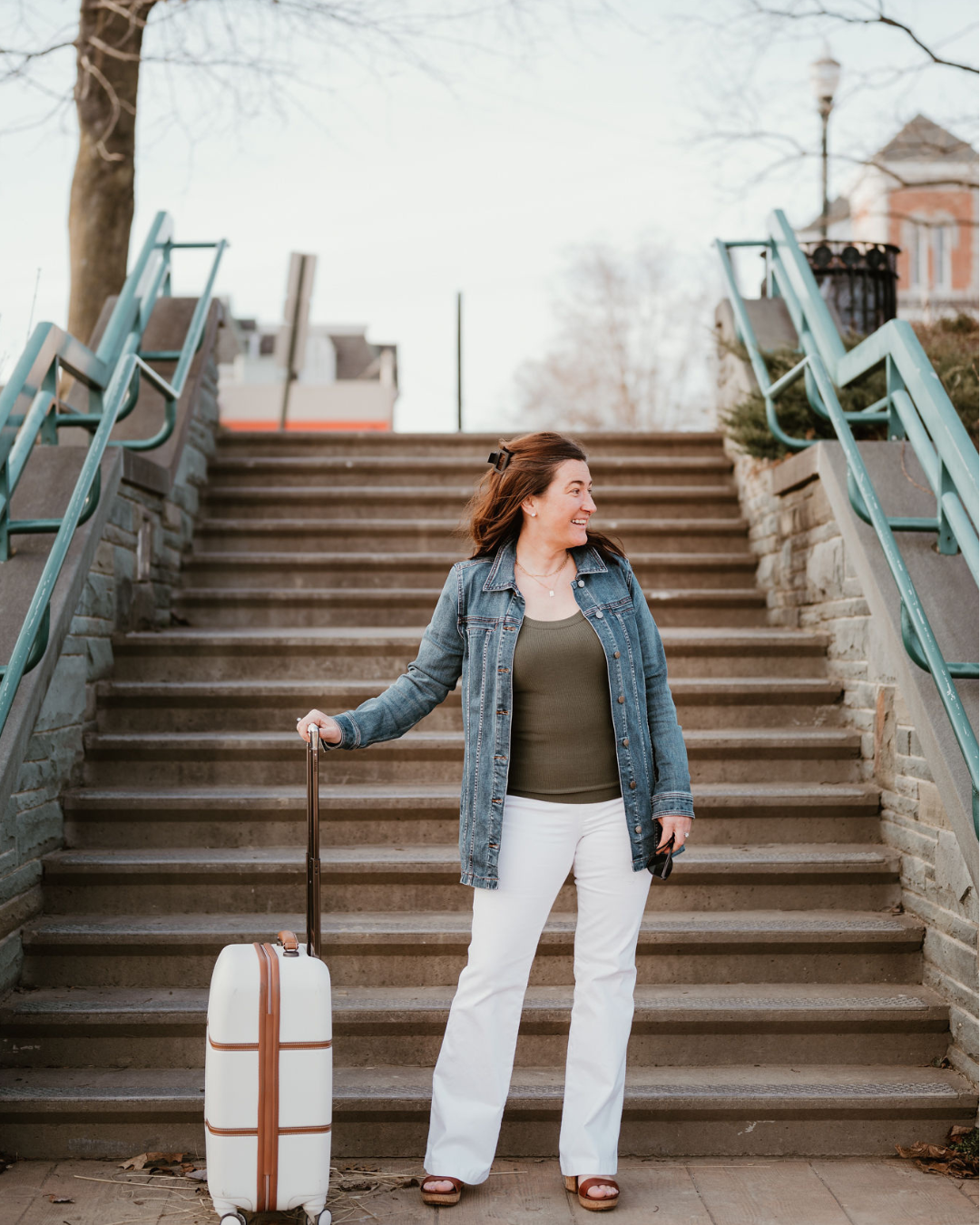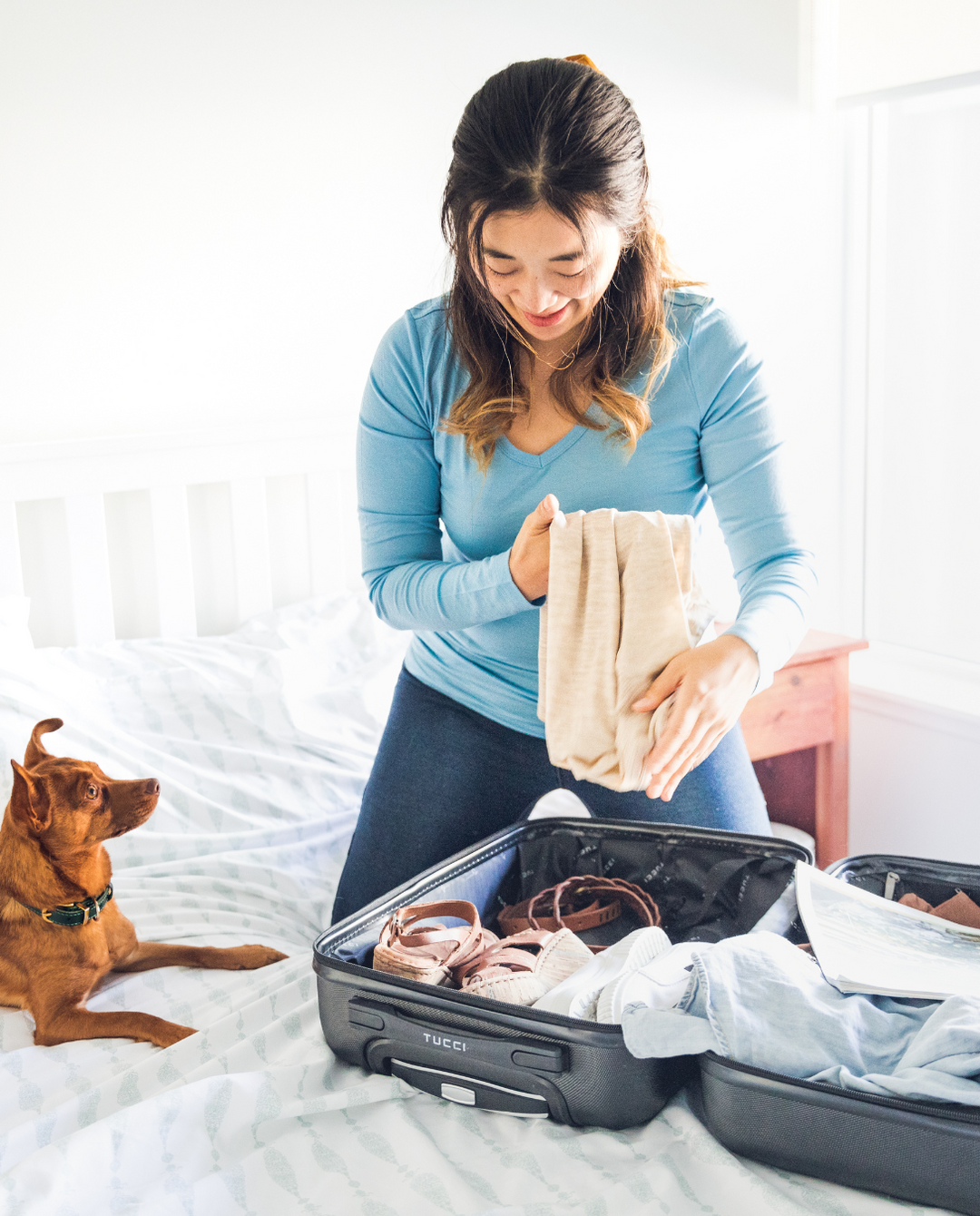Outdoor clothing is designed for practicality. You need gear that will keep you cool when it’s hot, and warm when it’s cold; and regardless of the temperature you always want to stay dry. But these aren’t the only concerns you need to account for when purchasing performance clothing. For many people the weight, space and expense of their gear is just as important as its functionality. Whether you’re filling your backpack for a long distance hike or just trying to cram all your gear in a carry-on for your next ski trip, properly layering your clothing is the key to getting the performance you need from as few pieces as possible.
Woolx base layer pieces are designed to work together as a layering system, providing superior temperature and moisture control. By layering different weights of our 100% Merino Wool pieces you’ll be ready to face the elements, without having to purchase or pack a different item for every type of weather condition you might encounter.
Layering Basics:
- Base Layer – Moisture Control and Warmth
The primary purpose of a base Layer is to keep the wearer warm and dry. This next-to-the-skin layer has to be soft and comfortable while it holds in heat and wicks moisture away from the body. Wool is the ultimate insulator, in cold weather the natural crimp in wool fibers creates tiny pockets of trapped warm air that act as insulators, holding in heat next to the body. Merino wool is also naturally able to pull moisture away from the skin through the process of capillary action. Wool absorbs sweat away from your skin, the liquid then moves through the wool fibers to the drier surface area of the fabric where it can evaporate. The weight of your base layer controls the warmth level and should be determined by the temperatures and conditions you’re facing.

On a hot summer’s day one of our lightweight tees or tanks may be the only top you need. At a weight of 170 g/m2 of fabric, the Woolx lightweights are our finest weave. Made of Merino Wool with 17.5 micron diameter fibers they are as soft as cashmere, providing the ultimate layer of comfort right next to your skin. A lightweight Tee is also the perfect first layer when temperatures are just starting to cool down, or if you’ll be facing extreme temperature variations from hot to cold throughout your day.

If you’ll be out in colder temperatures, or if you’ll be very active in freezing temps, you’ll likely need a midweight base layer. Our Woolx midweight tops and bottoms have a weight of 230 g/m2 of fabric, providing the ideal amount of insulation to keep you warm without overheating during rigorous activities. Perfect as a base layer for skiing, hiking, snowshoeing, and running in freezing temperatures. This super versatile weight can also work as your outerwear or as your only garment in more moderate conditions.

If you plan to be sedentary for prolonged periods in freezing conditions you’ll need the warmest base layer you can find. Our Woolx heavyweight tops and bottoms are made of 400 g/m2 wool, offering almost twice the warmth of the midweights. This is the ideal base layer to keep you comfortable in freezing conditions if you won’t be moving around to create your own body heat. Perfect for ice fishing, hunting from a deer stand, or snowmobiling. A set of Woolx heavyweights are also excellent sleeping attire while camping out in winter conditions. The heavyweight wool keeps you warm at night, while the antimicrobial properties of natural wool prevent you from transferring your hard earned body odor to your expensive sleeping bag.
- Mid Layer – Insulation
The midlayer is where the magic of the Woolx layering system happens. Air trapped between each layer creates pockets of warm air, adding even more insulation than a heavier garment alone. The wicking process continues as water is wicked from the baselayer to the midlayer, leaving the wearer dry and comfortable.

The most important feature of a good layering system is the ability to easily adjust your warmth levels as conditions change. A midlayer ¼ zip works perfectly over a lightweight Tee if temperatures start to drop at the end of a late summer day-hike. Try a ¼ zip over the midweight crew neck for extreme warmth that can be easily removed as your activity accelerates. By wearing multiple layers of non-bulky merino wool you can comfortably transition from handling the coldest conditions to warmer weather with ease.
- Outer Layer – Protection from wind, rain, and snow
The final piece of a good layering system is the outer layer or shell. This item should protect you from the elements. Depending on conditions you may need a jacket and pants that offer varying degrees of water and/or wind proofing. Shells may be made of a waterproof breathable fabric like Gore-Tex or a non-breathable coated Nylon material.
For non-freezing conditions that don’t require a water or windproof shell a Woolx Heavyweight Sweatshirt or midweight ¼ zip top may be all the protection you need.

A good layering system needs to be flexible and each piece should work together without being redundant. You must be able to adjust your clothing to whatever weather and temperature conditions you’re facing. Ideally each piece should be able perform several tasks, as a base, mid or outer layer depending on your needs. Your summer outerwear becomes your fall base layer, the midweight bottoms you wear as a base layer skiing can be worn as leggings for a hike in spring. Flexibility is even more essential if you’ll be facing multiple temperature changes in one day. It might be a sunny June day at basecamp, but once you climb above the tree line there can be snow on the ground. You need to be able to add and remove gear to regulate your temperature, not just for comfort but for safety as well.

Purchasing your outdoor gear with layering in mind will not only keep you warm and comfortable, it’s good for your wallet and your backpack. Proper layering means you’ll need to buy and pack fewer pieces overall as each item performs multiple functions. Just ask any lightweight backpacking aficionado, if you get home from a trip and haven’t worn everything in your pack all at once, you’ve over packed!





